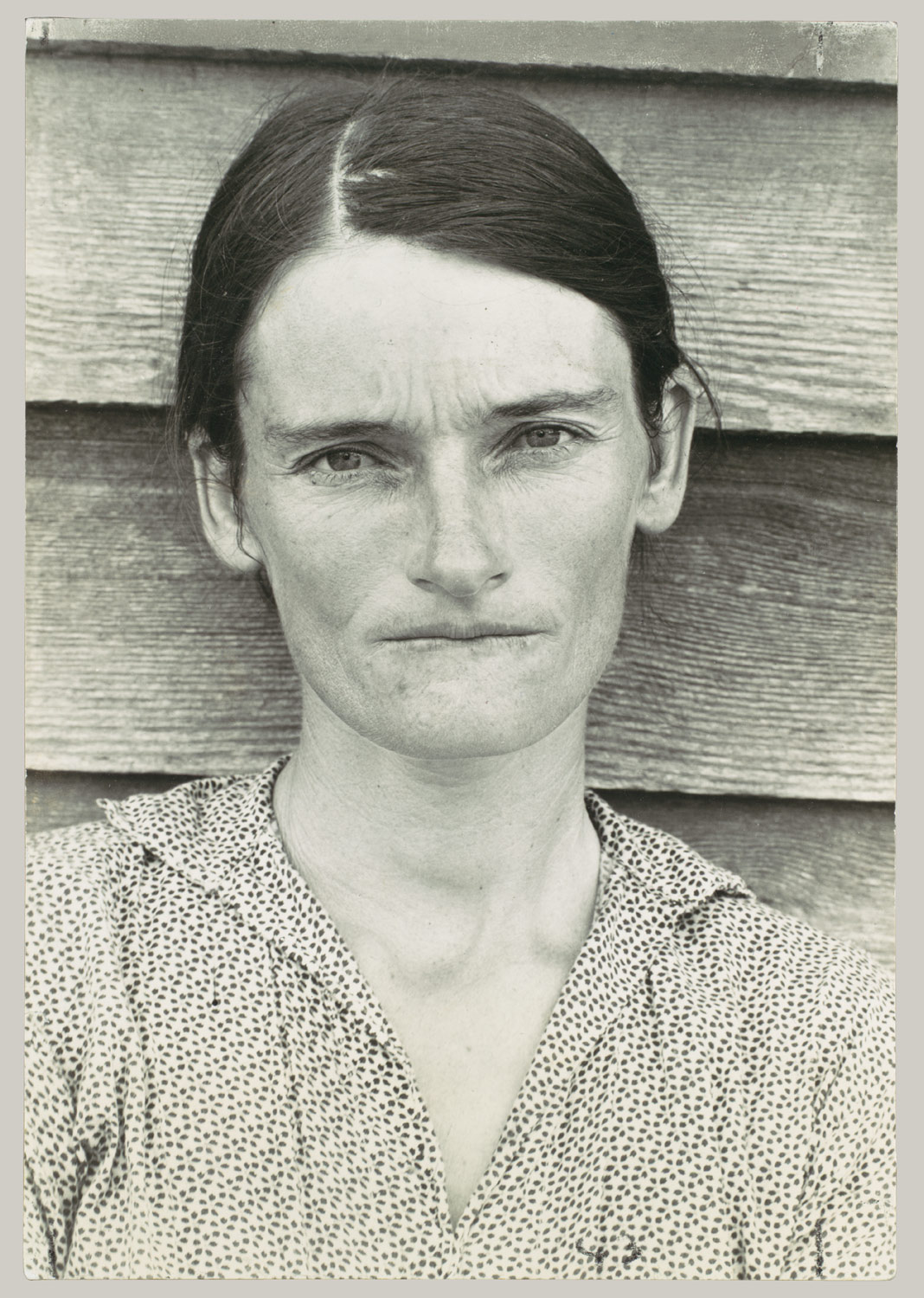
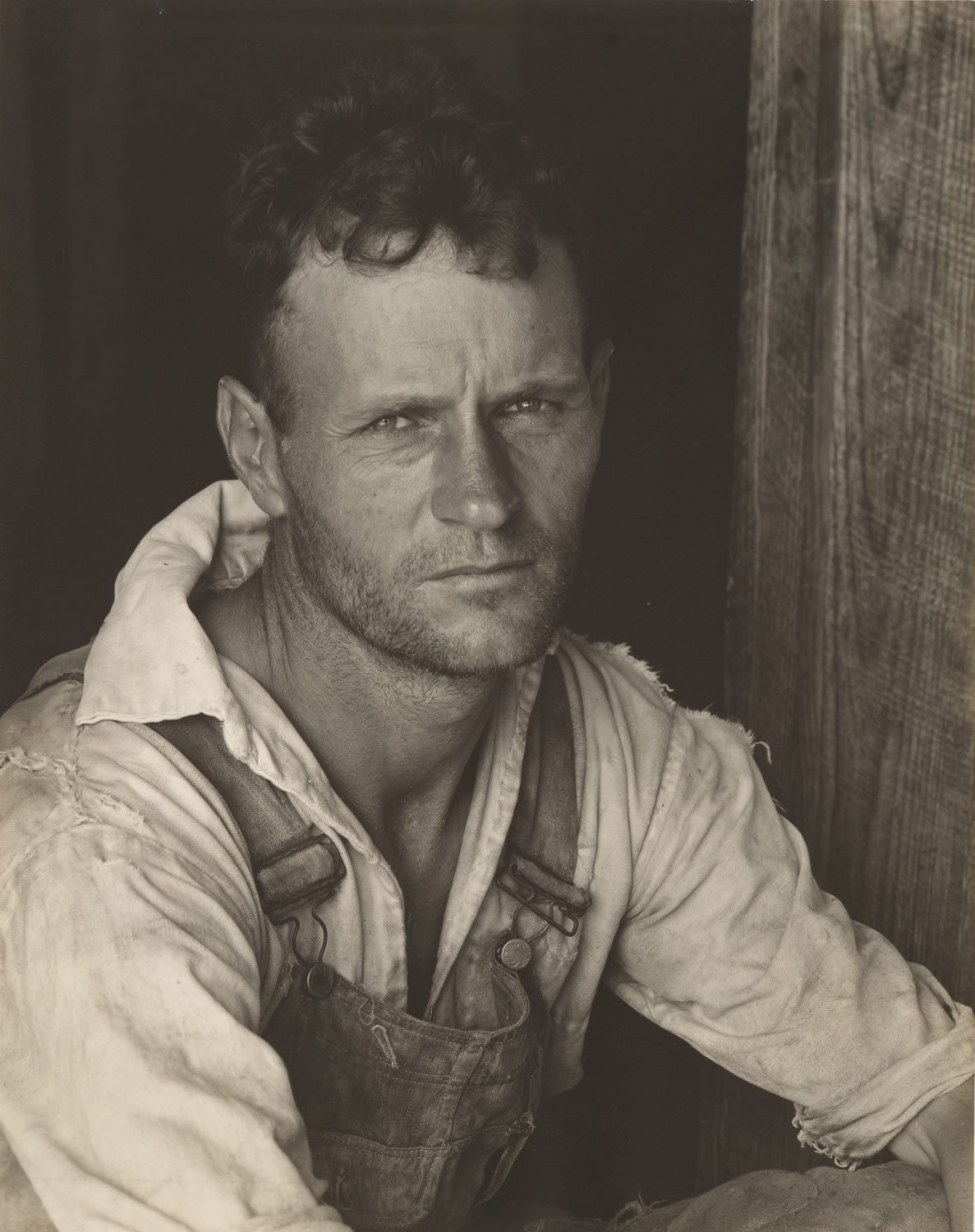
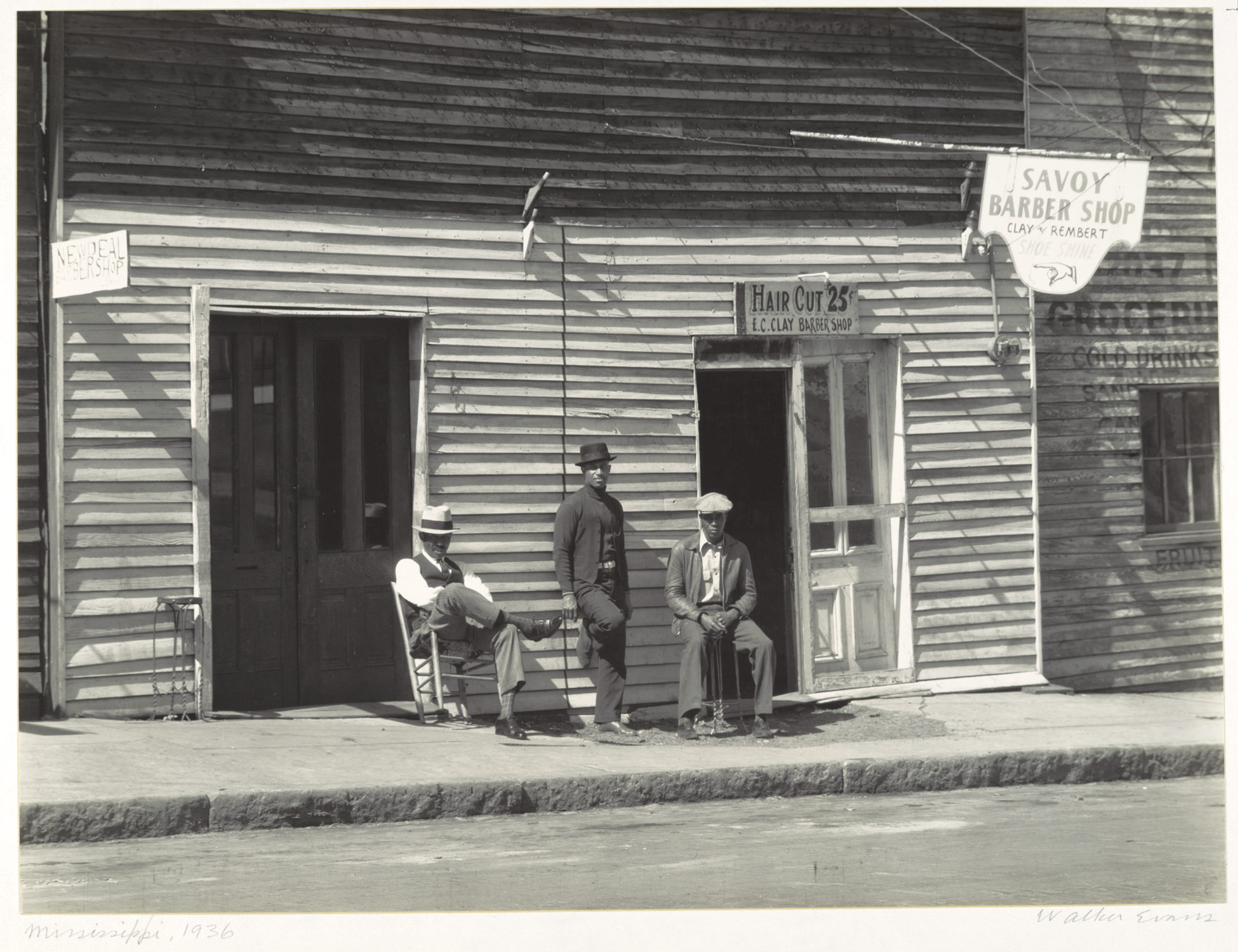
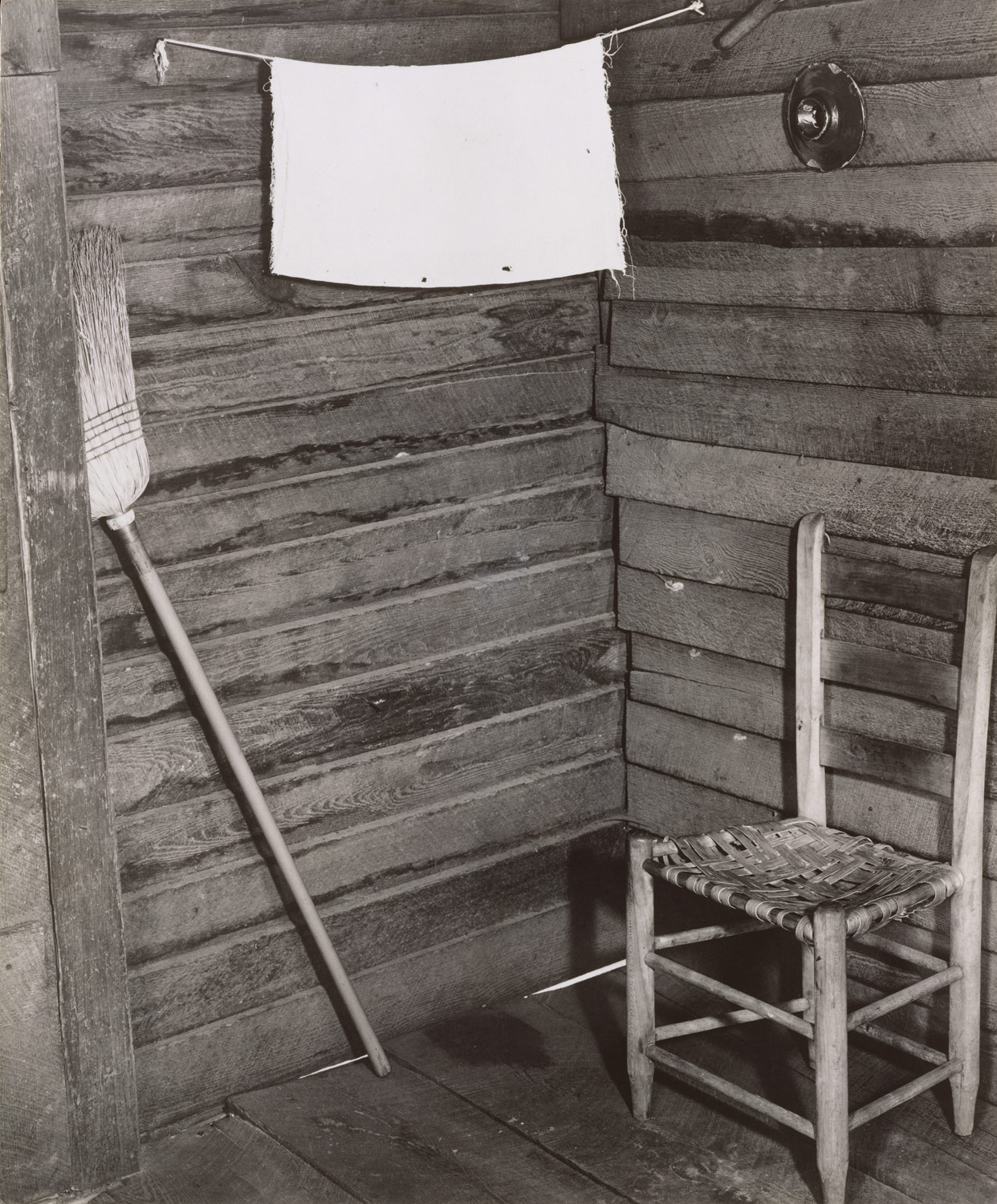
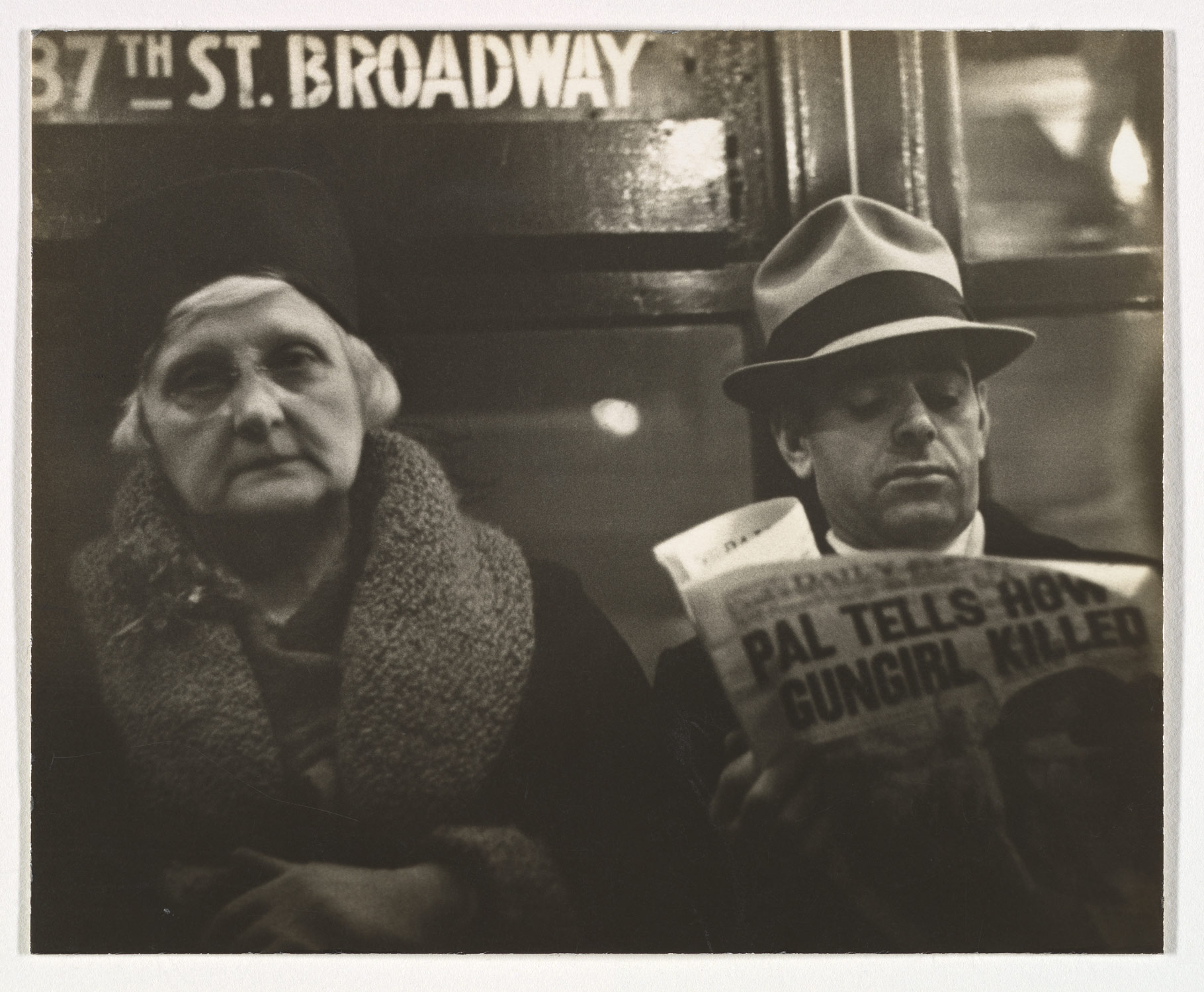
In 1935, Evans spent two months at first on a fixed-term photographic campaign for the Resettlement Administration (RA) in West Virginia and Pennsylvania. From October on, he continued to do photographic work for the RA and later the Farm Security Administration (FSA), primarily in the Southern United States.
In the summer of 1936, while on leave from the FSA, he and writer James Agee were sent by Fortune magazine on assignment to Hale County, Alabama, for a story the magazine subsequently opted not to run. In 1941, Evans's photographs and Agee's text detailing the duo's stay with three white tenant families in southern Alabama during the Great Depression were published as the groundbreaking book Let Us Now Praise Famous Men. Its detailed account of three farming families paints a deeply moving portrait of rural poverty. The critic Janet Malcolm notes that there was a contradiction between a kind of anguished dissonance in Agee's prose and the quiet, magisterial beauty of Evans's photographs of sharecroppers.
The three families headed by Bud Fields, Floyd Burroughs and Frank Tingle, lived in the Hale County town of Akron, Alabama, and the owners of the land on which the families worked told them that Evans and Agee were "Soviet agents," although Allie Mae Burroughs, Floyd's wife, recalled during later interviews her discounting that information. Evans's photographs of the families made them icons of Depression-Era misery and poverty. In September 2005, Fortune revisited Hale County and the descendants of the three families for its 75th anniversary issue. Charles Burroughs, who was four years old when Evans and Agee visited the family, was "still angry" at them for not even sending the family a copy of the book; the son of Floyd Burroughs was also reportedly angry because the family was "cast in a light that they couldn't do any better, that they were doomed, ignorant".
Evans continued to work for the FSA until 1938. That year, an exhibition, Walker Evans: American Photographs, was held at The Museum of Modern Art, New York. This was the first exhibition in the museum devoted to the work of a single photographer. The catalogue included an accompanying essay by Lincoln Kirstein, whom Evans had befriended in his early days in New York.
In 1938, Evans also took his first photographs in the New York City Subway with a camera hidden in his coat. These would be collected in book form in 1966 under the title Many are Called. In 1938 and 1939, Evans worked with and mentored Helen Levitt.
Evans, like such other photographers as Henri Cartier-Bresson, rarely spent time in the darkroom making prints from his own negatives. He only very loosely supervised the making of prints of most of his photographs, sometimes only attaching handwritten notes to negatives with instructions on some aspect of the printing procedure.